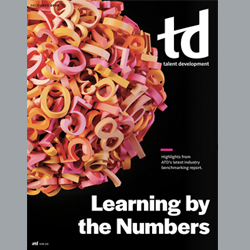TD Magazine Article
Word Wiz: Organizational Network Analysis
Deloitte identifies organizational network analysis as a structured way to visualize how communications, information, and decisions flow through an organization.
Mon Dec 02 2019
Every organization consists of informal go-to teams comprised of individuals who always know how things are done. Deloitte identifies organizational network analysis (ONA) as a structured way to visualize how communications, information, and decisions flow through an organization. Each organization has four elements:
central node (people who seem to know everything and can influence the group quickly)
knowledge broker (the mediator of the group who facilitates discussion)
peripheral node (high-potential employees who opt to stay on the organization’s periphery)
ties (the formal and informal relationships between nodes).
Often, leaders identified on an org chart are not the true hubs of information flow. Finding the relationships between nodes and ties makes it much easier to identify critical connections and potential barriers to information flow and collaboration.
Using ONA to inform organization design efforts can help:
Increase operational effectiveness by building an organization that is structured to increase collaboration and exchange of information between the right people.
Transform companies in a smarter way by identifying formal and informal leaders who can be counted on to facilitate change and help accelerate the realization of transformation benefits.
Use talent more effectively by minimizing role confusion and redundancy.
You've Reached ATD Member-only Content
Become an ATD member to continue
Already a member?Sign In

